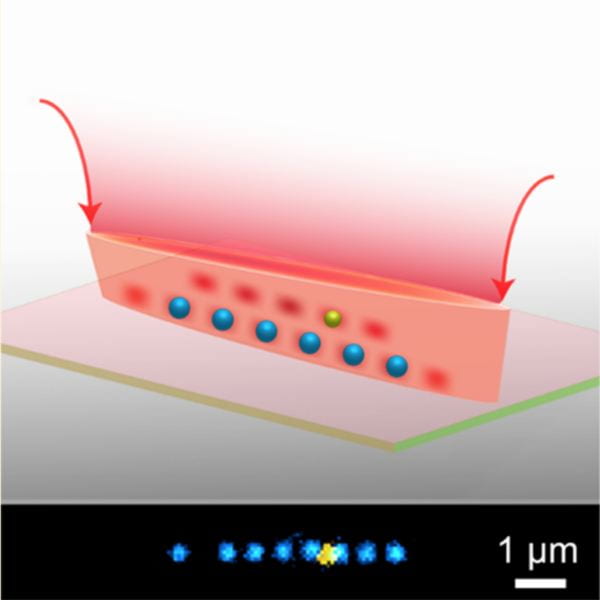Nano-plasmonics with Optical Vector Beams
The Scherer group has a 20+ year history of research in nanoplasmonics, initially the correlated spatio-temporal dynamics of plasmonic materials and later nanoparticles, the recent focus is on collective excitations that can be created in nanoplasmonic structures and “meta-atoms” with unusual beams of light. Vector beams, in which the polarization properties are dependent on the position in the transverse cross-section such as azimuthally or radially polarized beams, interact quite differently with matter and materials that scalar beams (e.g. those that have uniform spatial polarization properties such as linearly or circularly polarized). In analogy with the Maxwell-Faraday law, azimuthally polarized beams can selectively drive optical magnetic modes analogously to magnetism in electromagnetics but now at optical (e.g. petahertz) frequencies. Furthermore, the cross sections for these optical magnetic modes in nano-structured meta-atoms are as large as electric (dipolar) modes. New opportunities in optical physics emerge from these new excitations. The animation above is an electrodynamics simulation showing the oscillating vector fields created with focused beams of azimuthally polarized light interacting with a dielectric core – Ag nanoparticle shell spherical structure (only the equatorial plane is shown)
spectroscopy with vector beams
The plasmon hybridization model of electromagnetic coupling between plasmonic nanoparticles predicts the formation of lower energy “bonding” and higher energy “antibonding” modes in analogy with the quantum mechanical description of chemical bonding. For a symmetric metallic nanoparticle dimer excited by linearly polarized light, the hybridization picture predicts that in-phase coupling of the dipole moments is optically allowed, creating bright “modes”, whereas the out-of-phase coupling is dark due to the cancellation of the oppositely oriented dipole moments (in the quasistatic approximation). These bright modes are electric dipolar in nature and readily couple to scalar (i.e., linearly or circularly polarized) beams of light. We show that focused cylindrical vector beams, specifically azimuthally and radially polarized beams, directly excite dark plasmon modes in symmetric gold nanoparticle (AuNP) dimers at normal incidence.
Nano-Photonics

We have shown that our optical matter systems can “co-trap” single quantum dots [1]. In other recent theoretical papers [2] we predicted that strongly coupled hybrid plasmonic-photonic (2-level) systems can give rise to novel quantum mechanical behavior such as entanglement. We are now exploring the (classical) field enhancement (deenhancement) of the radiative emission from Q-dot single photon emitters; that is to measure and control the Purcell enhancement of the emitters in optical matter structures.
[1] Entanglement of two, three, or four plasmonically coupled quantum dots, PRB (2015)
[2] Hierarchical Photonic Synthesis of Hybrid Nanoparticle Assemblies. JPCL (2013)
